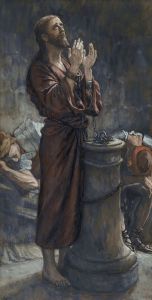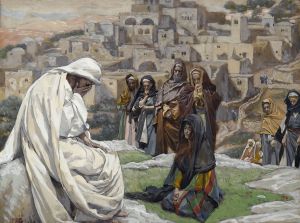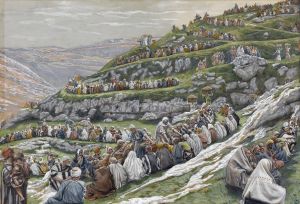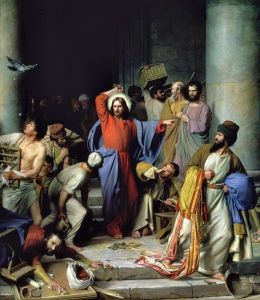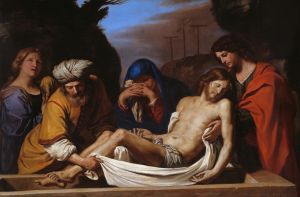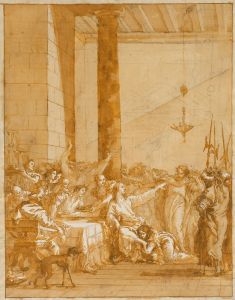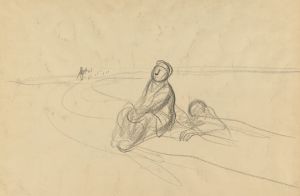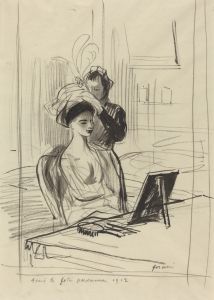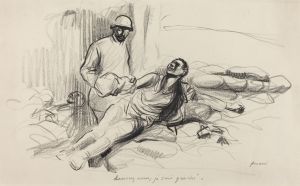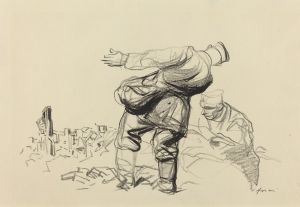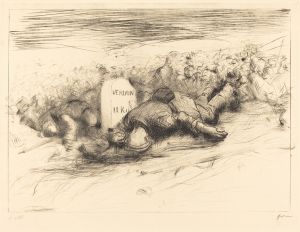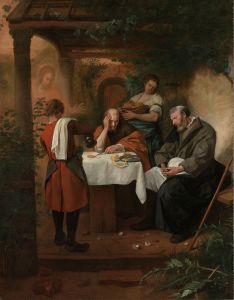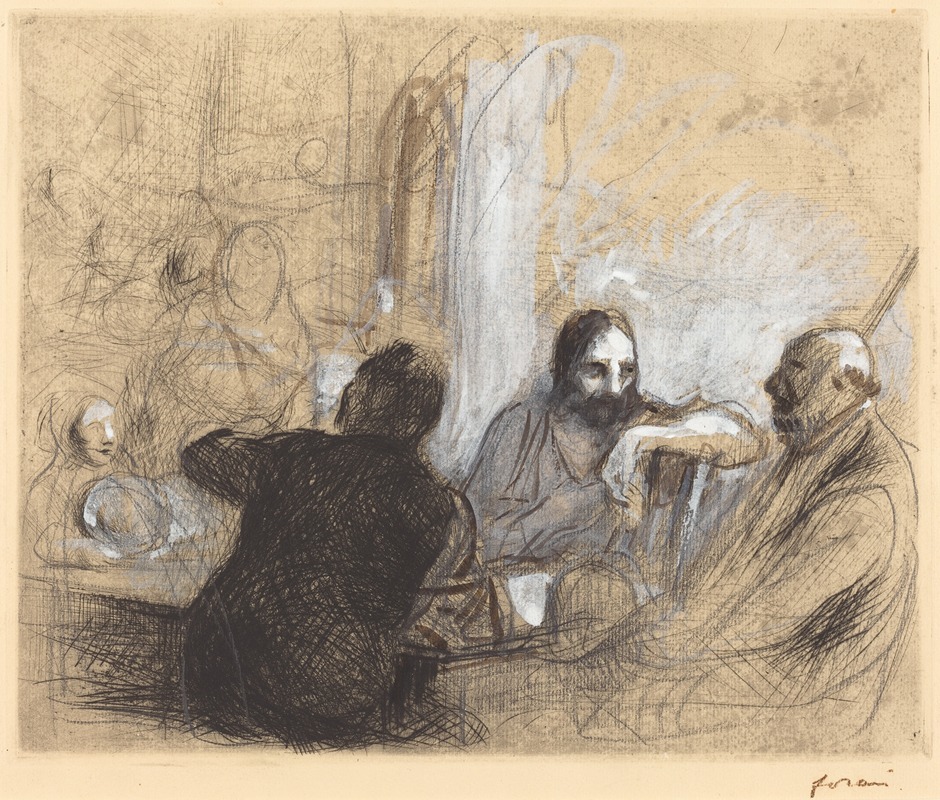
Pilgrims at Emmaus
A hand-painted replica of Jean-Louis Forain’s masterpiece Pilgrims at Emmaus, meticulously crafted by professional artists to capture the true essence of the original. Each piece is created with museum-quality canvas and rare mineral pigments, carefully painted by experienced artists with delicate brushstrokes and rich, layered colors to perfectly recreate the texture of the original artwork. Unlike machine-printed reproductions, this hand-painted version brings the painting to life, infused with the artist’s emotions and skill in every stroke. Whether for personal collection or home decoration, it instantly elevates the artistic atmosphere of any space.
Jean-Louis Forain's painting "Pilgrims at Emmaus" is a notable work by the French artist, who was active during the late 19th and early 20th centuries. Forain is often associated with the Impressionist movement, although his style evolved over time to incorporate elements of realism and social commentary. His works frequently depicted scenes of Parisian life, capturing the vibrancy and complexity of the city and its inhabitants.
"Pilgrims at Emmaus" is inspired by the biblical story from the Gospel of Luke, where two disciples encounter the resurrected Jesus on the road to Emmaus. This subject has been a popular theme in Christian art, as it represents a moment of revelation and recognition of Christ's resurrection. Forain's interpretation of this scene reflects his interest in religious themes, which became more pronounced in his later works.
Forain's approach to this painting is characterized by his use of light and shadow, which adds a dramatic effect to the scene. His brushwork, while retaining some of the fluidity associated with Impressionism, also shows a more defined and structured composition. This combination of techniques allows Forain to convey the emotional intensity of the moment when the pilgrims recognize Jesus.
The painting is notable for its focus on the human figures and their expressions, which Forain captures with sensitivity and depth. The use of color and light in the painting enhances the spiritual and mystical atmosphere of the scene. Forain's ability to depict the subtleties of human emotion is evident in the way he portrays the pilgrims' awe and wonder upon realizing the identity of their companion.
Jean-Louis Forain was not only a painter but also a prolific illustrator and caricaturist. His work appeared in various publications, where he often commented on social and political issues of his time. This background in illustration is reflected in his paintings, where he often employs a keen observational eye and a narrative quality.
Forain's religious works, including "Pilgrims at Emmaus," are part of a broader trend in his later career, where he explored themes of faith and spirituality. This shift in focus may have been influenced by the social and cultural changes occurring in France during his lifetime, as well as his personal reflections on religion and morality.
While "Pilgrims at Emmaus" may not be as widely recognized as some of Forain's other works, it remains an important example of his artistic evolution and his engagement with religious subject matter. The painting demonstrates Forain's ability to blend traditional themes with modern techniques, creating a work that resonates with both historical and contemporary audiences.
Overall, Jean-Louis Forain's "Pilgrims at Emmaus" is a testament to his skill as an artist and his ability to convey complex emotions through his work. It stands as a significant piece within his oeuvre, reflecting his interest in the interplay between light, shadow, and human expression.





